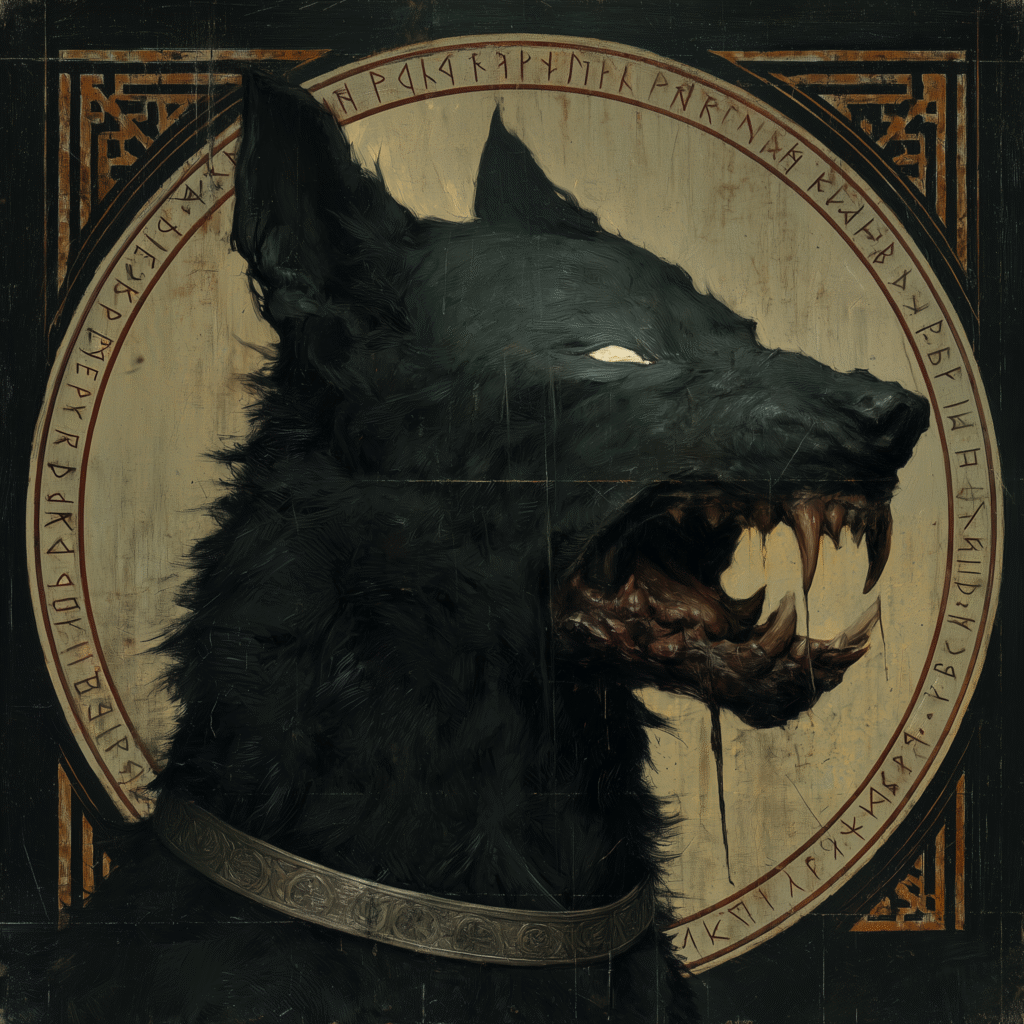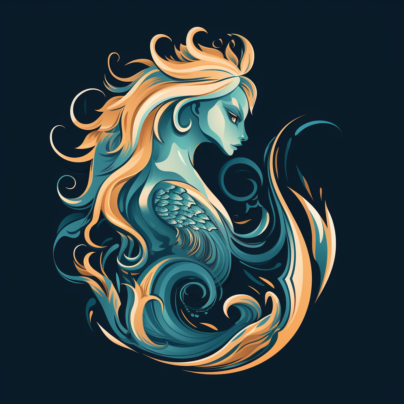The Oprichniki, “The Blackhound Brotherhood of Divine Purge”
“Summon fear and fanatics with the Oprichniki: a black-robed brotherhood of holy enforcers who pray at dawn and execute by dusk!”

- Name – Oprichniki
- Symbol / Emblem – A black dog’s head mounted on a silver broom; black robes and banners adorned with these symbols.
- Motto or Slogan – “To Sniff Out Sin, To Sweep Away the Unclean”
- Type – Secret society with aspects of a religious order and state enforcers.
- General Alignment – Lawful neutral to lawful evil; zealous enforcers of divine and sovereign will through fear and ritual.
- Purpose / Function – To serve as the Tsar’s personal enforcers, rooting out treason and heresy; acting as agents of divine purification through violence and ritual.
- Founding Date / Origin – Established under the reign of Tsar Ivan IV (though known in lore prior through precursors linked to ancient Rus’ mystical orders).
- Founders – Instituted by Tsar Ivan IV “the Terrible” with possible mystical advisors from monastic or shamanistic traditions.
- Beliefs & Core Values – Devotion to the Tsar as God’s earthly instrument; belief in spiritual warfare between light and darkness; sanctity of ritual suffering; enforcement of purity through eradication of corruption.
- Public Reputation – Feared enforcers; reviled by nobility and commoners alike for brutal purges; regarded with suspicion or awe by clergy; whispered of as instruments of divine wrath and madness.
- Hidden Agenda (if any) – To maintain and expand mystical dominion over spiritual and political realms; to wield forbidden knowledge and control otherworldly forces; possibly seeking apocalyptic purification.
- Leadership & Hierarchy – Led by a supreme commander known as the “Holy Raven” (Svyatoy Voron); structured in small detachments with ranks akin to monks and warriors; tightly controlled chain of command.
- Number of Members – Approximately 300 core members; thousands serve loosely under their authority.
- Key Figures – Svyatoy Voron (Holy Raven); other unnamed commanders and mystics who conduct rituals and interrogations.
- Recruitment & Membership – Drawn from orphans, disaffected warriors, monks, and those marked by encounters with the supernatural; inducted through rigorous trials of silence, pain, and ritual death/rebirth.
- Initiation Rites or Requirements – Seven days of silence; solitary confinement beneath sacred earth; symbolic “death” through ritual blade; acceptance of the dog’s head and broom symbols.
- Rules / Code of Conduct – Absolute obedience to the Tsar and brotherhood; secrecy on all matters; ritual purity; relentless pursuit of traitors and unclean spirits.
- Headquarters / Base of Operations – Secret chambers within the Kremlin and remote monasteries; hidden lodges in dense forests near Novgorod and Moscow.
- Territory / Sphere of Influence – Principalities of Muscovy, Novgorod, and surrounding Rus’ lands; influence within court politics and religious institutions.
- Allies – Certain orthodox monks and clergy who share zeal for purity; loyal Tsarist factions.
- Rivals / Enemies – Boyar families opposed to centralization; foreign agents and spies; folk spirits and dark entities hunted by the brotherhood; heretics and witches.
- Known Operations or Projects – The Massacre of Novgorod; suppression of suspected witchcraft and heresy; secret rites to bind spirits and cleanse lands.
- Funding / Resources – Directly funded by the Tsar’s treasury; seized estates and confiscated wealth from purged nobles.
- Affiliated Organizations – Orthodox Church factions sympathetic or complicit; monastic orders providing spiritual and mystical counsel.
- Symbols in Use – Dog’s head pendants, broom emblems embroidered on black garments, black horse tack, ritual masks shaped like wolves or dogs.
- Attitude Toward Outsiders – Distrustful and hostile; outsiders are potential enemies or sources of corruption; few exceptions for those proving loyalty or usefulness.
- Customs & Rituals – Dawn prayers in silence; blood oaths; ritual cleansing by fire and blood; symbolic “sweeping” of lands; frequent use of masks and animal imagery in ceremonies.
- Language / Ciphers Used – Old Church Slavonic combined with secret hand signs and coded runes derived from pagan and Christian symbology.
- Notable History / Key Events – Formation in by Ivan IV; the Massacre of Novgorod; legends of the Night of Red Lanterns.
- Human/Non-Human Members – Exclusively human initiates, though rumors speak of enchanted members or spirit familiars bound to their service.
In the waning days of the Byzantine world and on the cusp of Constantinople’s fall, rumors stir from the shadowed lands of the Rus’ — of a brotherhood not born of courtly lineage, but of dread decree and divine madness. Known as the Oprichniki, or “the Chosen Apart,” they are cloaked in sable robes and ride midnight steeds through the veiled forests and wind-lashed roads between Novgorod and Suzdal.
Their banners bear the black dog’s head with a silver broom — the first to sniff out sin, the latter to sweep it from the world. These symbols, though coarse to the noble eye, carry deeper portents: they mark a creed that claims loyalty not to mortal sovereigns, but to a vision of divine purification whispered through fire and blood.
To the tsars and boyars, the Oprichniki present themselves as wardens of loyalty and defenders against treachery, ever vigilant against the rot of foreign plots and heretical sorcery. Yet their true purpose lies not in safeguarding a throne, but in enforcing a sacred order that predates the Christian rite — a pact bound in the twilight days of Kiev, when idols fell and saints wept.
They believe the world is a battleground between the divine flame and the creeping night — and that only through ritual, suffering, and silence may mankind remain tethered to the light. Their chapels are windowless, their sermons wordless, and their judgments final. It is whispered they guard an apocryphal Gospel, inked in saint’s blood, that grants them visions of the Unseen War behind the veil of waking life.
Among the people, they are both feared and revered. Peasants cross themselves thrice at the sound of hoofbeats, uncertain whether a village will be blessed with grain or burned to cinders. The Orthodox clergy, divided, debates their orthodoxy — some claim the Oprichniki commune with angels through ecstatic pain, others denounce them as wolves in cassocks. In truth, the brotherhood traffics deeply with the old myths. They neither deny nor decry folklore; rather, they hunt, bind, or bargain with the beings it names — leshy, rusalka, strigoi, and worse — caging them in reliquaries, or pressing them into reluctant service against greater, darker foes.
Their influence spreads quietly, like frost on glass: unseen until too late. The courts of Pskov, the monasteries of Kirillov, the dungeons beneath the kremlins — all have known the black seal of the Oprichniki. Initiates are not born but broken: orphans taken from plague pits, soldiers found muttering after encounters with spectral armies, monks who dream of fire-laced scripture. Their induction rites are obscure, but involve seven days of silence, a blade in the dark, and a night spent beneath the earth. Few survive. Fewer return unchanged.
Of their inner circle, little is known save for the name of Svyatoy Voron, the “Holy Raven,” a gaunt man said to command both the brotherhood and the birds that haunt their approach. He is credited — or blamed — for the Night of Red Lanterns in 1432, when an entire noble house in Tver vanished after condemning the brotherhood’s practices. Lanterns still flicker above the empty manor each anniversary, though none dare enter.
Even now, in this year of our Lord 1453, as empires fall and omens flare in the heavens, the Oprichniki ride. They do not serve kings. They serve Judgment.
Membership of the Oprichniki
Summary Table
| Rank | Title | Role | Numbers | Thematic Traits |
|---|---|---|---|---|
| Low | Kormchii | Enforcers/Patrols | Hundreds | Masked, loyal, fearful of spirits |
| Mid | Vedyuny | Mystics/Ritualists | 50–70 | Diviners, trance-bound, ritual specialists |
| Mid | Chornyye Teni | Assassins/Covert Agents | 30–40 | Silent killers, psychological terror |
| High | Svyatoy Voron | Supreme Commander | 1 | Enigmatic, prophetic, shadow-bound |
| High | Volkodlak | Military Commanders | 3–5 | Brutal leaders, wolf-themed warriors |
This hierarchy preserves the mysticism, secrecy, and ideological fervor of the Oprichniki,
Low-Ranking Oprichniki Positions
1. The Kormchii (The Steersmen)
- Role: Foot soldiers and enforcers; patrol the borders of Oprichniki territory and enforce edicts in villages.
- Responsibilities: Carry out arrests, perform basic interrogations, conduct public punishments, and scout for signs of heresy or treason.
- Numbers: Several hundred; the broadest base of the brotherhood.
- Characteristics: Often orphans or former soldiers marked by mysterious visions; clad in simple black tunics bearing the dog’s head insignia; frequently wear masks resembling snarling dogs or wolves during operations.
- TTRPG Use: Frontline combatants or stealth operatives; limited mystical training but fiercely loyal; often encounter supernatural phenomena with fear and awe.
Mid-Ranking Oprichniki Positions
2. The Vedyuny (The Seers)
- Role: Mystic interrogators and ritual specialists.
- Responsibilities: Conduct divinations to detect traitors and unclean spirits; oversee the initiation rites for new members; administer ritual punishments; guard forbidden relics.
- Numbers: Around 50–70, forming the esoteric core of the brotherhood.
- Characteristics: Known to enter trance states; wear dark robes embroidered with silver brooms and cryptic sigils; often blindfolded or veiled during ceremonies to symbolize insight beyond mortal sight.
- TTRPG Use: Spellcasters or psychic agents with abilities in divination, mind-affecting magic, and exorcism; handle secret knowledge and communicate with spirits.
3. The Chornyye Teni (Black Shadows)
- Role: Agents of assassination and covert operations.
- Responsibilities: Eliminate high-profile enemies; infiltrate rival factions; sabotage conspiracies against the Tsar; protect the brotherhood’s secrets by any means necessary.
- Numbers: Approximately 30–40 elite operatives.
- Characteristics: Move silently and strike swiftly; use poison, stealth, and psychological terror; known to leave the dog’s head emblem as a calling card at scenes of their work.
- TTRPG Use: Rogue archetypes specialized in stealth, assassination, and arcane trickery.
High-Ranking Oprichniki Positions
4. The Svyatoy Voron (Holy Raven)
- Role: Supreme Commander and spiritual leader.
- Responsibilities: Oversees all brotherhood operations; interprets divine visions; presides over the darkest rituals; directly commands elite squads during purges.
- Numbers: Singular.
- Characteristics: Enigmatic figure always shrouded in raven feathers and black silk; rumored to possess uncanny longevity and communion with spectral ravens that serve as eyes and ears.
- TTRPG Use: Powerful NPC with strong divine or shadow magic; master strategist; potential quest giver or antagonist.
5. The Volkodlak (Wolf-Bearer)
- Role: Commander of the Oprichniki’s militant divisions.
- Responsibilities: Organizes military campaigns and purges; trains mid- and low-ranking members in combat and ritual discipline; enforces internal discipline.
- Numbers: A small council of 3–5 officers directly beneath the Holy Raven.
- Characteristics: Known for brutal efficiency and iron will; carry ceremonial weapons fashioned with wolf motifs; embody the ferocity and loyalty of the pack.
- TTRPG Use: Warrior NPCs with battlefield leadership abilities; may serve as formidable antagonists or hardened allies.

 Buy me a coffee
Buy me a coffee